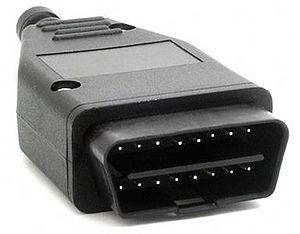On board diagnostics
Like all cars, the Elise is fitted with an On board diagnostic, or OBD, connector (socket) tucked away in the passenger foot well.
This can be used to communicate with the cars ECU for retrieving diagnostic information, resetting the MIL or viewing live engine parameters.
NOTE: This is only valid for the Elise S2/Exige S2. The Elise S1 and Exige S1 is equipped with a similar connector, but this connector is NOT OBD compatible!
The standard is also referred as: -
- ODB2
- ODB-2
- ODBII
- ODB-II
DIY
It is quite simple to connect to the cars ECU yourself.
OBD-II codes
OBD-II codes consist of a number of parts. Here is a sample OBD2 code:
P0171
Here is a breakdown of what each digit of the code means:
First Character - System The first character identifies identifies the system related to the trouble code.
P = Powertrain
B = Body
C = Chassis
U = Undefined
Second Digit - Code Type The second digit identifies whether the code is a generic code (same on all OBD-II equpped vehicles), or a manufacturer specific code.
0 = Generic (this is the digit zero -- not the letter "O")
1 = Enhanced (manufacturer specific)
Third Digit - Sub-System The third digit denotes the type of sub-system that pertains to the code
1 = Emission Management (Fuel or Air)
2 = Injector Circuit (Fuel or Air)
3 = Ignition or Misfire
4 = Emission Control
5 = Vehicle Speed & Idle Control
6 = Computer & Output Circuit
7 = Transmission
8 = Transmission
9 = SAE Reserved
0 = SAE Reserved
Fourth and Fifth Digits These digits, along with the others, are variable, and relate to a particular problem. For example,a P0171 code means P0171 - System Too Lean (Bank 1).
External Links
http://en.wikipedia.org/wiki/On_Board_Diagnostics
